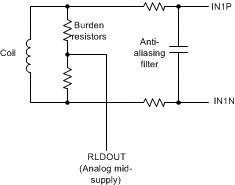Hello,
I'm working on a project for long-range magnetic field sensing of current carrying wires.
We're trying to detect energized distribution and transmission lines 10 or more feet away.
We've had pretty good luck using commercially available magnetometers like the MMC34160PJ Magnetoresistive 3-axis I2C magnetometer, but we still want better accuracy than 0.5mG/Count.
We're working on implementing a small 23 x 13 mm search coil with about 500 turns (still have to calc. this) using AWG 44 magnet wire.
Our goal is to interface the search coil with an extremely high-resolution ADC (>= 20bit) and successfully observe sinusoidal magnetic fields in the 1-micro-Tesla range.
Can you please recommend an external ADC you've had success with with the following requirements:
- No 50 or 60Hz rejection.
- 4 channels
- small SMD package
- 24 bits or higher resolution
- extremely low noise
- 1800 Hz sampling rate per channel.
- Easily interfaced with ATMEGA328P (I2C or SPI)
- < $10
Any other suggestions on the project is greatly appreciated!
JT


